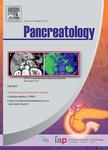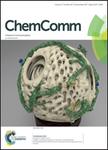版权所有:内蒙古大学图书馆 技术提供:维普资讯• 智图
内蒙古自治区呼和浩特市赛罕区大学西街235号 邮编: 010021
T=题名(书名、题名),A=作者(责任者),K=主题词,P=出版物名称,PU=出版社名称,O=机构(作者单位、学位授予单位、专利申请人),L=中图分类号,C=学科分类号,U=全部字段,Y=年(出版发行年、学位年度、标准发布年)
AND代表“并且”;OR代表“或者”;NOT代表“不包含”;(注意必须大写,运算符两边需空一格)
范例一:(K=图书馆学 OR K=情报学) AND A=范并思 AND Y=1982-2016
范例二:P=计算机应用与软件 AND (U=C++ OR U=Basic) NOT K=Visual AND Y=2011-2016


Edwin Southern developed a blotting technique for DNA in 1973, thereby creating a staple of molecular biology laboratory procedures still used after several decades. It became a seminal technology for studying the structure of DNA. The story of the creation and dissemination of this technology, which was not patented and was freely distributed throughout the scientific community, stands as a case study in open science. The Southern blot was developed at a time when attitudes about commercial intrusion into health research were beginning to change and the practical value of molecular genetics was becoming apparent to industry. Interest from industry in fundamental molecular biological techniques meant that scientists began to think about commercial uses of their work even in otherwise "basic" research. The unpatented Southern blot is contrasted with later patented technologies, particularly microarray methods, which were created in the same environment by many of the same people, but which followed significant changes to UK policies encouraging commercialization of academic research and a norm shift friendlier to such commercialization within academic molecular biology. Professor Southern's personal experience illuminates how the technologies evolved, and his views provide insight into how scientists' attitudes about commercialization have changed.







电话和邮箱必须正确填写,我们会与您联系确认。
版权所有:内蒙古大学图书馆 技术提供:维普资讯• 智图
内蒙古自治区呼和浩特市赛罕区大学西街235号 邮编: 010021

暂无评论